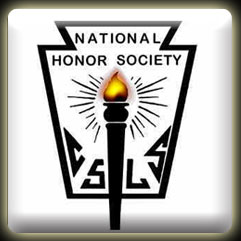Streetcar Named Desire
In the play A Streetcar Named Desire, by Tennessee Williams, symbols define the meanings of the piece in multiplex and intricate ways. The single symbol of the streetcar named Desire is one that is especially powerful. It in itself carries multiple themes of the piece throughout the play, just as it carried Blanche to Elysian Fields to start the action. The continual references to the streetcar throughout the play play a deeper role in its development as a symbol, thusly imbuing the potentially meaningless streetcar with untold layers of deeper and more consequential meanings.
The most obvious reference made by the streetcar is that to the unchecked desire felt by Blanche. The connecting Cemetery rail line and her final destination of Elysian Fields both convey a meaning of predestination and foreshadowing. Blanche’s desire lead her to her own mental breakdown. Blanche even said that she was driven “from one to another, hunting for some protection--here and there, in the most--unlikely places” (Scene 9, pg. 119). Her continual need for desire was a mental plea for help, even when no one would help her because of her need for desire. The self bolstering spiral of decay that she had gotten herself trapped into would eventually careen her into a state mental institution. This influences the theme that uncontrolled desire destroys the wielder.
The situation that Blanche has gotten herself into was started long before the beginning of the play, and the streetcar Blanche arrived on is a symbol for her attempt to regain a new life. The significance of her mode of transport being a streetcar is plain. Streetcars along with trains symbolize fast transportation, they carry many people quickly and effectively. Blanche is trying to escape her past as quickly as possible. She does manage to get a few months of a head start, but finally her tragic past catches up with her. Mitch even has to “check[ed] on the story” (Scene 9, Pg. 117) to confirm it, due to its outlandish nature. Blanche relies on the streetcar to move faster than the past, which it can not do. This aspect of the streetcar implies the theme that bad reputations can not be erased.
The presence of the streetcar in this play also is a symbol for the destruction of the Antebellum style of writing in the south. The streetcar is not a stereotypical Antebellum occurrence, representing instead the filthy, city, devoid of the southern charm that writers like George Tucker, John Pendleton Kennedy, and John Esten Cook so admired. Blanche in A Streetcar Named Desire comes from Belle Reve, a symbol of the Antebellum south, to Elysian Fields on a streetcar, a symbol of the new literary movement against the Antebellum stereotypes. When Blanche finally enumerates “the loss--” (Scene 1, Pg. 26), the reader is privy to the final death throes of the Antebellum south, as symbolized by Belle Reve. The streetcar brought Blanche away from the Antebellum south, and brought her to the new chaotic world of New Orleans.
The streetcar is also a symbol for the loss of order and stability in Blanche’s new role. The streetcar system is precise and orderly. Blanche is able to ask a stranger for directions and is told to “take a street-car named Desire, and then transfer to one called Cemeteries and ride six blocks and get off at--Elysian Fields!” (Scene 1, Pg. 15). This is a testament to the order, stability, and calmness of a well run system. As soon as she leaves this system however, her life becomes chaotic with Stanley, the epitome of masculinity, and Stella, who is soon to give birth, both pressuring Blanche to become what she is not. Eventually Stanley wins over, and Blanche is reduced to a state of mental failure. The streetcar’s order soon becomes a parallel for the triumph of masculinity over feminism, and of violence over sensitivity.
Blanche’s mental condition not only encourages her to lie and hide her truth from others, but also to hide the truth from herself. When confronted with Stella’s reaction after her thrashing, Blanche replies “brutal desire--just--Desire!--the name of that rattle-trap street-car that bangs through the Quarter,” (Scene 4, Pg. 70). The irony in this situation is that Blanche is applying the situation of her own demise to Stanley, who would soon go on to be her punishment for being so desiring. Blanche is surprisingly unable to accept the truth about herself, even though she spends so much time trying to hide it from others. This is another theme of the piece. People are unwilling to accept the truth about themselves.
The streetcar is such a convoluted, intense, and esoteric symbol that it alone can account for many of A Streetcar Named Desire’s themes. These themes include the hazards of uncontrolled desire, the permanence of infamy, the domination of machismo, the destruction of the Antebellum, and people’s resistance to reality. All five of these important themes are displayed prominently throughout the play, and profit from the incorporation of the streetcar named Desire.



